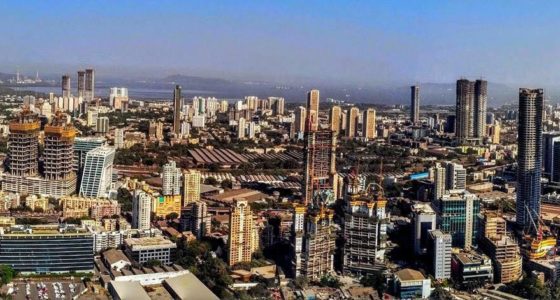The four cities together recorded a combined total gross leasing of 10.62 million sq. ft
- Q1 2024 Gross leasing* hits 15.16 million sq. ft., marks second highest Q1 figure
- Domestic demand drives growth, contributes ~53% to the overall leasing activity
- Delhi NCR leads, Bengaluru follows – Together account for ~47% of leasing activity
- 2024 Gross leasing on track to surpass last year’s 63 million sq. ft. record
The markets of Chennai, Delhi NCR, Mumbai and Pune achieved historic gross leasing highs in Q1 2024 (Jan-March) compared to all previous Q1 performances in these cities. The main forces behind this have been domestic occupiers, particularly in the BFSI, Flex, and manufacturing/engineering sectors, who have outperformed their international competitors by driving demand in these locations.
At an overall level as well, gross leasing activity reached an impressive 15.16 million sq. ft in Q1 2024, an increase of ~13.8% compared to the same period last year. This marks the third consecutive quarter where gross leasing has surpassed the 15 million sq. ft mark, following the historical high of 20.94 million sq. ft in Q4 2023 and 16.03 million sq. ft in Q3 2023. Notably, this also represents the second-highest gross leasing ever recorded in the first quarter of any year, only trailing the levels of 17.3 million sq. ft witnessed in Q1 2020. The quarter has set the platform for India’s office market to reach and even surpass the peak activity levels witnessed in 2023.
Domestic occupiers march ahead.
In the first quarter of 2024 belonged to the domestic occupiers, particularly in the BFSI, Flex, and manufacturing/engineering segments as they gained a majority share in office leasing.
“India’s office ecosystem is a blend of “office to the world” and strong domestic sector growth. While global corporations remain strong takers of office space in India, their sluggish decision-making has seen the strong domestic economy pick up the slack. In Q1 2024, domestic occupiers intensified their demand, contributing approximately 53% to the gross leasing activity. This remains in line with the trend being observed over the past 2 years where domestic occupiers have consistently gone toe to toe with their global counterparts in space acquisition. Moreover, this highlights the resilience and adaptability of India’s office market,” said Dr. Samantak Das, Chief Economist and Head of Research and REIS, India, JLL
Flex rise as tech continues to remain sluggish.
Flex and manufacturing/engineering sectors maintain a strong bullish outlook on their growth trajectory, while the tech industry continues to grapple with the challenge of sluggishness. Space take-up by third-party outsourcing firms, given global headwinds and slower revenue growth continues to impact the tech sector, with its share of gross leasing at 24.2%, mostly range-bound compared to the previous year. Flex space operators continue to play a significant role in India’s office markets, accounting for 21.0% of the gross leasing in Q1 2024, the highest space take up ever for this segment post Covid. The manufacturing/engineering sector is witnessing a sustained strengthening in demand, with the sector’s share rising to 20.2%, the highest in nearly three years, as India’s GCC ecosystem continues to become more broad-based with high-end R&D work coming into the country and creating expansion-driven space demand.
“India’s office market has consistently demonstrated unparalleled resilience and growth in the face of global sluggishness and has benefitted from its strong underlying fundamentals that support the sustained growth in demand. Over the next 3 – 4 years, we expect the market activity levels of over 60 million sq. ft witnessed in 2019 and 2023 to become the new normal, with gross leasing levels aligning more closely with the range observed during those years. In 2024, the pace of corporate space take-up is anticipated to significantly accelerate in the latter half of the year, following the general elections and gross leasing is estimated to potentially surpass the 63 million sq. ft recorded just last year,” said Rahul Arora, Head, Office Leasing & Retail Services, India, JLL
Delhi NCR and Bengaluru account for ~47% of the gross leasing in Q1 2024
Delhi NCR and Bengaluru emerged as frontrunners in the market, accounting for 26.6% and 20.4% of the overall gross leasing in Q1 2024, respectively. Chennai continued its strong showing, following up from the momentum witnessed in 2023, contributing to a significant 17.6% share of the overall leasing. Mumbai and Pune followed with gross leasing figures of 2.11 million sq. ft and 1.81 million sq. ft, respectively.
| Market | Q1 Average(2019-22) | Q1 2023 | Q1 2024 | Y-o-YChange |
| Bengaluru | 3.54 | 3.12 | 3.09 | -0.8% |
| Chennai | 1.18 | 1.89 | 2.67 | 41.7% |
| Delhi NCR | 2.64 | 3.99 | 4.03 | 1.1% |
| Hyderabad | 1.73 | 0.97 | 1.37 | 40.4% |
| Kolkata | 0.14 | 0.57 | 0.08 | -86.5% |
| Mumbai | 1.65 | 1.50 | 2.11 | 40.4% |
| Pune | 0.75 | 1.28 | 1.81 | 41.4% |
| Pan India | 11.65 | 13.32 | 15.16 | 13.8% |
Gross Leasing (mn sq ft)
Source: Real Estate Intelligence Service (REIS), JLL Research
Net absorption up 10.9% Y-o-Y
India’s net absorption** across the top 7 cities, stood at 8.30 mn sq ft, up by 10.9% y-o-y. This first quarter performance is second only to Q1 2022 among all Q1 numbers since 2020, signifying the consistent headcount growth-driven expansion activity by corporates in India. It is a testament to the country’s talent pool and competitive costs that most global firms’ business plans involve capacity augmentation in India. The net absorption during the quarter was led by Delhi NCR with a 27.3% share, followed by Bengaluru with 20.8%, Hyderabad with 18.7% and Mumbai with 18.1% shares, respectively. The first quarter net absorption for the cities of Delhi NCR, Mumbai and Chennai were also all at post-COVID highs compared to previous Q1 numbers, symptomatic of expansion-led demand on track to near historic highs in the India office market.
Outlook: Market activity primed to surpass 2023 peak levels
This positive trajectory will be primarily driven by the entry of new Global Capability Centers (GCCs) into the country, as well as the expansion of operations for existing GCCs across all key and emerging technology segments. Furthermore, India’s favorable manufacturing policies are predicted to attract even more strongly high-end research and development (R&D) work, further stimulating demand in the office market. The momentum of flex space operators amidst a likely revival in tech outsourcing as global market conditions improve are also expected to play a key role in taking India’s office market to greater heights in 2024 and beyond.
*Gross leasing refers to all lease transactions recorded during the period, including confirmed pre-commitments, but does not include term renewals. Deals in the discussion stage are not included.
**Net absorption is calculated as the new floor space occupied less floor space vacated. Floor space that is pre-committed is not considered to be absorbed until it is physically occupied.
Also Read: India’s Office Market Witnesses Strong Tenant Demand









